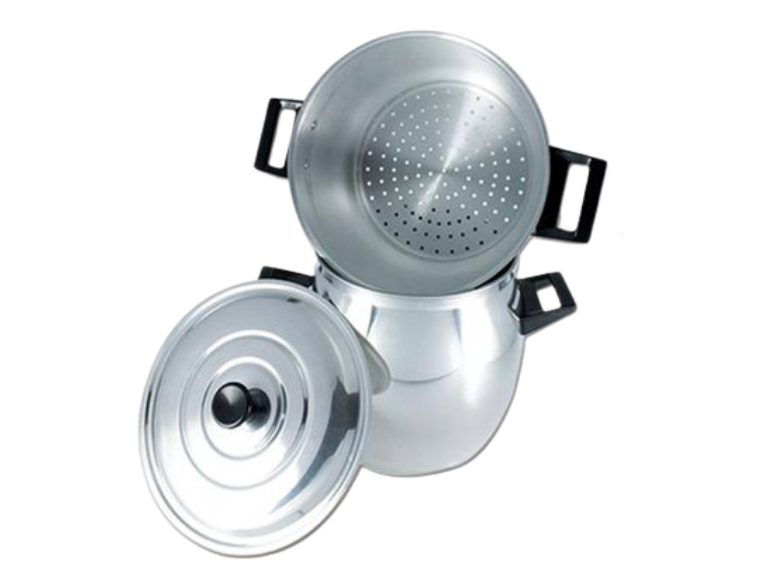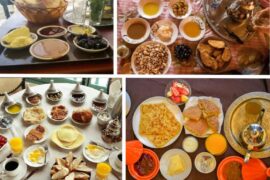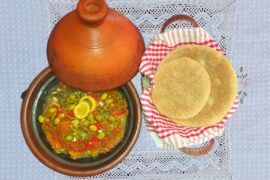Morocco is known for having one of the best cuisine recipes worldwide and Moroccan Couscous with Seven Vegetables is one of the famous dishes you should try in a Moroccan family house or in any Moroccan restaurant inside or outside the kingdom. Traditionally, Moroccans are used to eating Couscous on Friday lunch after coming back from the Friday prayer performed in mosques. There is also another popular Couscous recipe prepared with onion and raisins (Called Tfaya Couscous) and the one explained in this post is the Moroccan Couscous Recipe With Beef and seven vegetables.
Moroccan Couscous Recipe With Beef
Moroccan Couscous Tools:
Couscoussier (Lbarma)
To prepare any kind of Moroccan Couscous, you need a traditional utensil called Couscoussier or Barma (Moroccan Steamer Pot) composed of two parts; the upper utensil looks like a colander with holes in the bottom used to steam semolina, and the lower utensil is deeper and bigger to cook meat and vegetables.
GSAA or KASRIA
To serve couscous, most Moroccans use a big plate called GSAA or KASRIA as all people on the table eat from the same plate, and in general, GSAA is made from pottery.
The Couscoussier Ingredients:
- 1kg of meat (we used beef and it can be chicken or lamb);
- 1 onion;
- ½ glass of vegetable oil;
- ½ glass of olive oil;
- 1 chopped tomato (optional);
- 250g crushed tomatoes with their skin;
- 1 tablespoon of salt;
- 1 teaspoon of pepper;
- 1 teaspoon of ginger;
- 1 teaspoon full of Curcuma;
- Water (about 3 liters);
- Carrots, Turnips, and Zucchini (more or less 300g for each as you like);
- 1/2 cabbage;
- 300g of red squash;
- 1 bunch of parsley and coriander;
- Cayenne pepper.
Semolina Ingredients
- 1 kg of couscous semolina;
- 2 tablespoons of vegetable oil;
- 1 tablespoon of salt;
- Some water (see step 3);
- 1 tablespoon of butter or Smen (rancid butter).
Couscous Cooking Steps:
In the following steps, we will see how to cook The Moroccan Couscous with beef and Seven Vegetables.
Step 1:
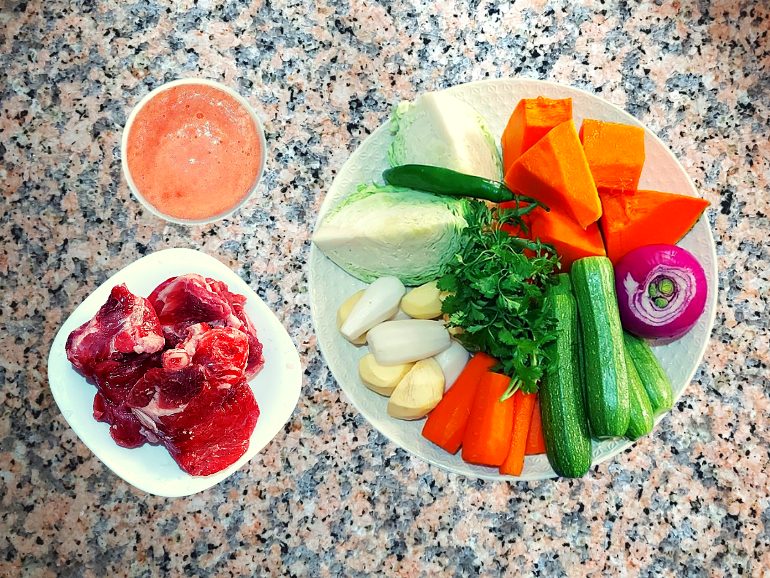
In the couscoussier lower utensil, over medium heat, add the meat with vegetables, olive, and vegetable oil. Then, add the chopped onion and pieces of the chopped tomato. Stir all the elements with salt, spices, and as soon as the meat takes a golden color, add about 3 liters of water, cover and bring to a boil.
Step 2:
Wash, peel and cut vegetables lengthwise. Cut the red squash into large chunks and the cabbage into two or four pieces depending on the cabbage size. Wash everything again and set it aside in freshwater.
Step 3:
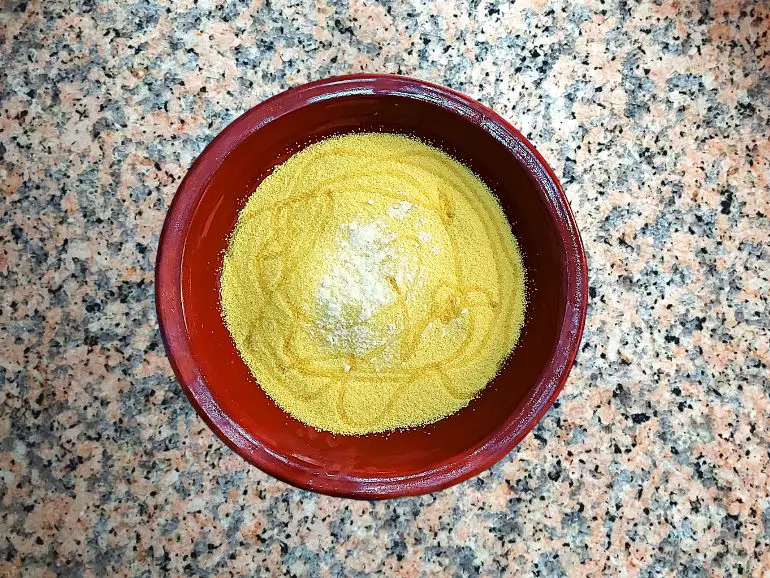 Meanwhile, put the semolina in a dish, drizzle it with 2 tablespoons of vegetable oil and stir the semolina with the palms of your hands until it absorbs the vegetable oil and add salt.
Meanwhile, put the semolina in a dish, drizzle it with 2 tablespoons of vegetable oil and stir the semolina with the palms of your hands until it absorbs the vegetable oil and add salt.

Then, soak the semolina and continue stirring again until it absorbs the water. Leave the semolina for about 20 minutes and put the semolina in the couscoussier upper utensil.
Step 4:
At this stage, add the carrots, turnips, parsley, coriander, and cayenne pepper to the upper utensil (used in step one).
Step 5:
As soon as the steam begins to cross the semolina, remove the semolina utensil, cover the lower utensil, and put the semolina back in the dish, sprinkle with a large glass of water and work by separating the stuck seeds then leave to rest for 10 minutes. Steam the semolina a second time for 20 minutes and you can cook it a third time depending on the semolina used. At the last cooking, add the butter or Smen (rancid butter).
Step 6:
Before the carrots and turnips are completely cooked, add the crushed tomatoes, pieces of red squash, zucchini, and cabbage. Let them cook for another 20 minutes.
How and What is Couscous served with?
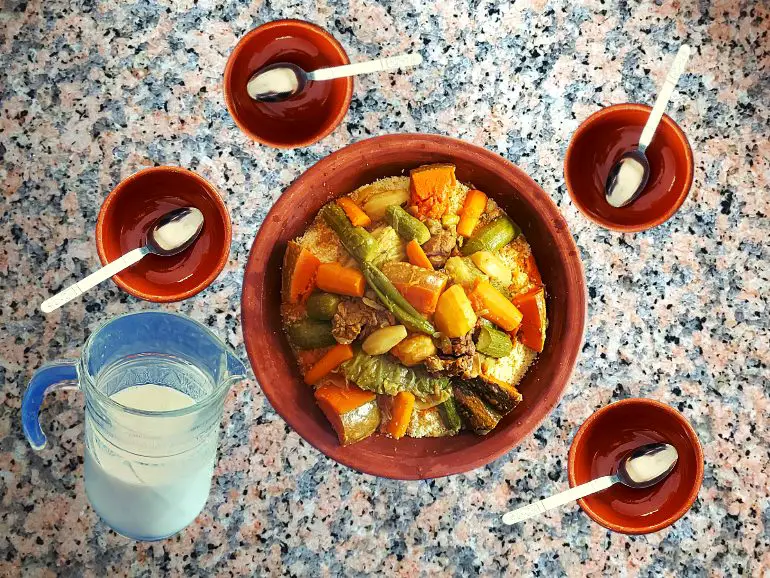
To present the couscous, put the semolina on the large plate (GSAA or KASRIA), put meat in the center, and the vegetables around it. Then, drizzle with the sauce, and some Moroccan families serve it with buttermilk and it is always served hot.
Finally, if you have any questions, feel free to ask in the comments section.


